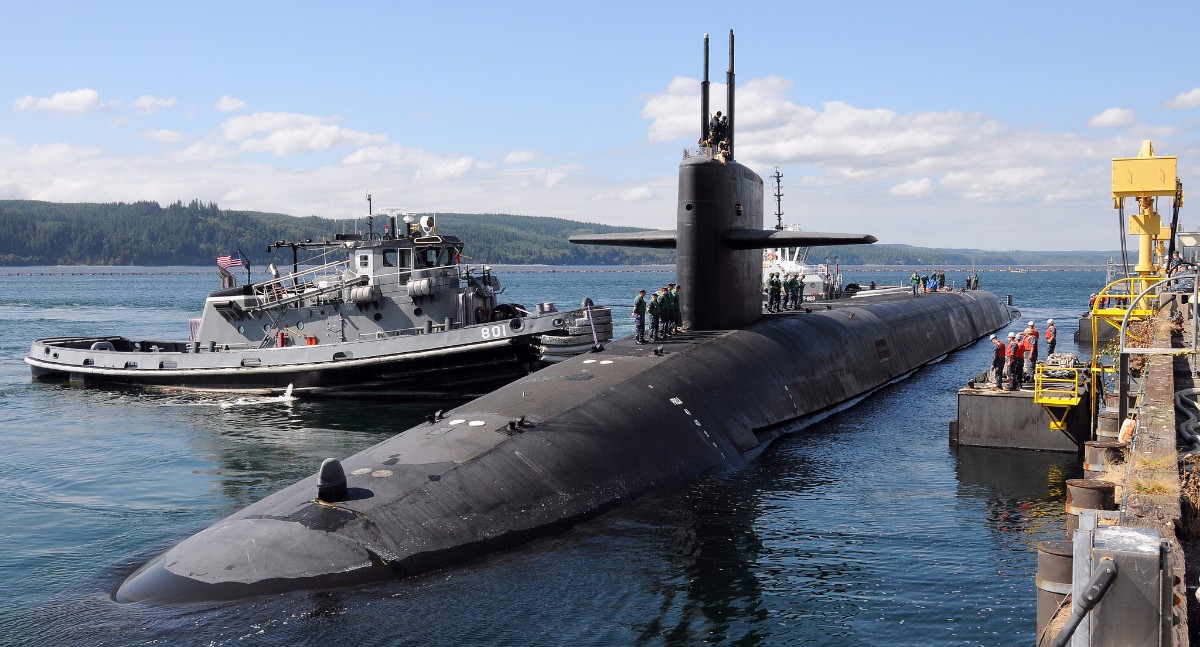 U.S. Navy
U.S. Navy
Considerations for US Nuclear Modernization Efforts
The 2017 Nuclear Posture Review provides the United States with a unique opportunity to reshape its nuclear policy to address current global threats and the future of its nuclear arsenal. In doing so, the United States must consider the cost-efficiency of its existing nuclear weapons modernization plan. The strategic nuclear weapons triad, consisting of bombers, land-based missiles, and submarines is the foundation of American nuclear deterrence strategy. During the Nuclear Posture Review, the United States should evaluate whether all components of its existing plan are essential to the maintenance of the strongest nuclear deterrent in the world.
The United States is predicted to spend $1 trillion over the next 30 years on nuclear weapons modernization as a part of a multi-faceted effort to revamp the US nuclear weapons capability. According to the US Congressional Budget Office (CBO), the total cost “to field, operate, maintain, and modernize U.S. nuclear forces” is $400 billion between 2017-2026. Specifically, the proposed modernization plan proposes a new ballistic missile submarine fleet, strategic bomber fleet, intercontinental ballistic missile (ICBM) fleet, and air-launched cruise missile (ALCM) fleet. In addition to upgrading the weapons themselves, other supporting components such as delivery systems, command and control operations, and nuclear warheads all have improvements scheduled for the future.
The current plan outlines upgrades to the Minuteman III ICBMs, their respective warheads, and supporting infrastructure such as launch control centers. In addition to existing maintenance, the modernization plan calls for the creation of an “essentially new missile.” The estimated cost for this plan is $60 billion. The plan states that the existing strategic bombers, the B-52Hs and B-2s, are to be replaced by 100 new “dual-capable long-range penetrating bombers,” called B-21s. In addition, existing life extensions to the B-2s will continue; the bomber can carry both nuclear and conventional weapons which makes it a versatile component of the US military weapons arsenal.
The proposal to upgrade the submarine-launched ballistic missiles and submarines should remain as planned, as the submarine leg of the triad is the “most survivable.” Plans to modernize the Trident II D5 SLBMs and the creation of a new fleet of submarines—the Columbia class—will ensure the vitality of the sea-based part of the triad until 2040. Unlike ICBMs which are the most susceptible to destruction in the event of a first-strike, submarines are significantly harder to locate, providing the United States with superior second-strike capabilities over its adversaries.
However, several government officials have expressed concerns regarding the high costs of modernization. Former Secretary of Defense William J. Perry and others have suggested that the issue is the triad itself, and that any plans to modernize the land-based ICBM force should be gradually phased out. Their argument is largely based on the strength of the existing deterrent and the appropriation of funds away from the modernization of conventional (and more often used weapons)—even though nuclear weapons spending is projected to reach 6% of the US defense budget over the next 10 years. The question of cost has proven to be a bipartisan issue—Republican Sen. John McCain questioned the necessity for the triad considering the high cost of the nuclear modernization program.
The Trump Administration’s Nuclear Posture Review can provide clarity for US nuclear policy in the coming years. Like the previous administration, this administration can choose to solidify the position of the triad as the guiding structure of the US nuclear arsenal, or choose to refocus its resources on modernizing certain components of the triad. Regardless, this year’s NPR will likely look different than the last one in 2010, as the situations with Russia and North Korea have changed significantly since that time. The modernization costs will be a topic of conversation within the review and one that shapes US nuclear policy for the remainder of the administration.
As a global leader, the United States must contemplate the implications of modernization as a symbol to other countries with nuclear weapons or with nuclear weapon aspirations. Modernization of nuclear weapons should not be equated to expanding the role of the weapons or making them easier to use in the event of a conflict. The United States, regardless of any modernization efforts, should continue to pursue arms reduction treaties for global safety. But, cost-effective modernization of existing nuclear weapons and their respective systems and infrastructure is necessary to maintain deterrence credibility against nuclear peers and reassure allies.





